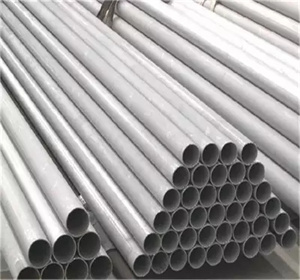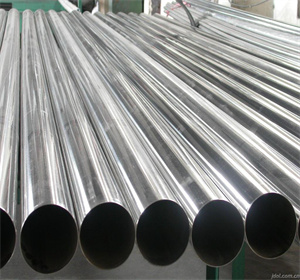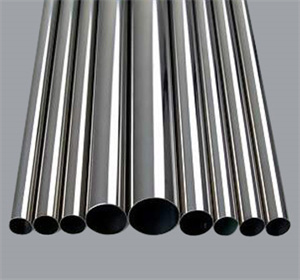The maximum carbon content of 316 stainless steel pipe is 0.03, which can be used in applications where annealing after welding cannot be performed and maximum corrosion resistance is required. 316 and 317 stainless steel (see below for the properties of 317 stainless steel) are molybdenum-containing stainless steels. The overall performance of this steel is better than that of 310 and 304 stainless steel. Under high temperature conditions, when the concentration of sulfuric acid is lower than 15% and higher than 85%, 316 stainless steel has a wide range of uses. 316 stainless steel also has good performance against chloride erosion, so it is usually used in marine environments. 316 stainless steel, also known as 00Cr17Ni14Mo2 corrosion resistance: The corrosion resistance is better than 304 stainless steel, and it has good corrosion resistance in the production process of pulp and paper. And 316 stainless steel is also resistant to erosion by marine and aggressive industrial atmospheres. Heat resistance In intermittent use below 1600 degrees and continuous use below 1700 degrees, 316 stainless steel has good oxidation resistance. In the range of 800-1575 degrees, it is best not to use 316 stainless steel continuously, but when 316 stainless steel is used continuously outside this temperature range, the stainless steel has good heat resistance. The carbide precipitation resistance of 316 stainless steel is better than that of 316 stainless steel, and the above temperature range can be used. At present, the international corrosion resistance of materials is divided into three categories according to the annual corrosion rate. The first category is complete corrosion resistance, and its corrosion rate is less than 0.1mm/year. High-quality stainless steel belongs to this type of material; The second category is still corrosion-resistant, and its corrosion rate is 0.1-1.0mm/year, which belongs to general stainless steel; the third category is not corrosion-resistant, and its corrosion rate is greater than 1.0mm per year. The counterfeit stainless steel products found this time have been analyzed, and the corrosion rate is as high as 9.67mm/year, which is a serious corrosion resistance. When further analyzing the composition of the product, it was found that the chromium content in the product, which represents an important indicator of stainless steel, is only 10.03% and 7.1%, which is far lower than the minimum requirement of 10.5% for chromium in stainless steel. Generally speaking, iron-based alloys with a chromium content greater than 10.5% are called stainless steels, and the chromium content of these two products is far below this lower limit, and the products are not stainless steels at all. The reason why this product appears in the market is mainly because the producers are greedy for their own interests and make use of the loopholes that the common people do not know enough about stainless steel to make fakes. It is generally believed that stainless steel is not magnetic. Counterfeiters have changed the composition of the product by using manganese instead of nickel to obtain a material that is neither magnetic, but extremely low-cost, so as to achieve high profits. The appearance of the product is indistinguishable from the usual stainless steel in the market circulation. At the same time, due to the lack of magnetism and the trick of doping and mixing by unscrupulous dealers, it is very difficult for consumers to distinguish the authenticity from the fake. will cause unforeseen consequences. In addition, a small amount of nickel is used in this material, but it cannot play the due role of nickel, which is a waste of precious metals, resulting in a certain waste of resources.



